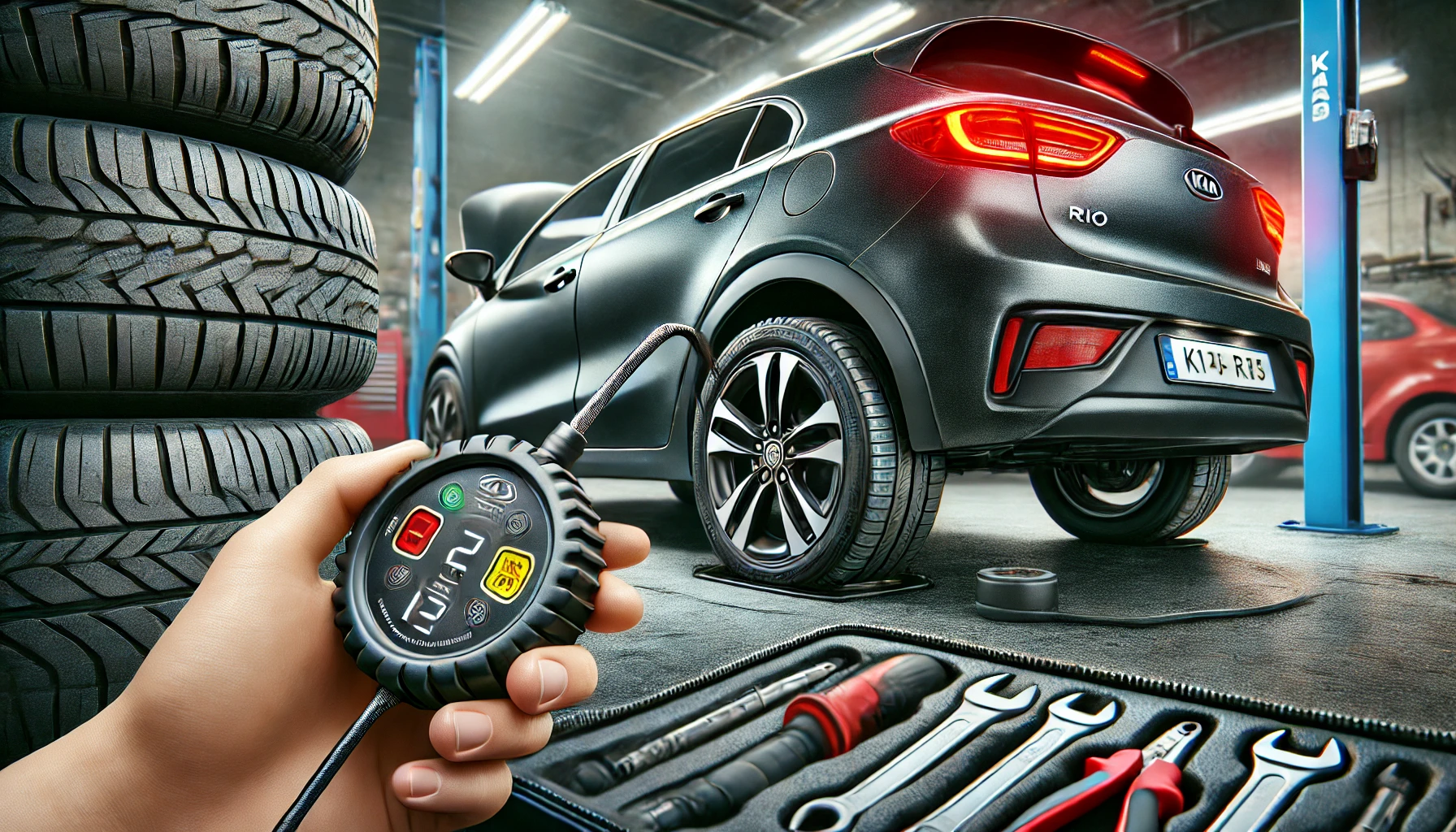
Common Causes of Tire Pressure Sensor Fault in a Kia Rio
- Low Tire Pressure: A common reason for the TPMS alert is underinflated tires. For the Kia Rio, the recommended tire pressure is usually around 32 PSI, but you should always check your owner’s manual for the exact number.
- Faulty or Damaged Sensor: The tire pressure sensors inside the wheels can wear out or get damaged over time. If a sensor malfunctions, it may stop transmitting accurate readings to the system.
- Dead Sensor Battery: TPMS sensors run on small batteries that last around 5-10 years. If a battery dies, the sensor will trigger a fault, and you will need to replace the entire sensor.
- Tire Rotation or Change: After rotating or replacing tires, the TPMS may require recalibration, which could cause a fault until the system recognizes the new tire positions or sensors.
- System or ECU Issues: In rare cases, the TPMS module or ECU may experience a glitch, leading to false warnings. A system reset or diagnostic at a repair shop might be needed to fix this.
How to Fix the Tire Pressure Sensor Fault in a Kia Rio:
- Check and Adjust Tire Pressure:
- Use a manual tire pressure gauge to check each tire’s pressure. For the Kia Rio, the recommended PSI is around 32 PSI for all four tires.
- If the tires are underinflated, inflate them to the correct PSI. This should clear the TPMS alert if the tires were the issue.
- Reset the TPMS System:
- Turn the car to the “ON” position (without starting the engine).
- Locate the TPMS reset button, which is typically under the steering wheel or dashboard.
- Press and hold the button until the TPMS warning light blinks three times.
- Drive for about 10-20 minutes at speeds over 25 mph to allow the system to recalibrate.
- Replace a Faulty Sensor:
- If a sensor is faulty or its battery is dead, you will need to replace it. A mechanic can use a diagnostic tool to identify which sensor is causing the issue.
- The cost to replace a sensor ranges from $50 to $150, depending on labor and parts.
- Hard Reset the System:
- Disconnect the car’s battery for 10-15 minutes to force a system reset. This might resolve any communication issues between the sensors and the ECU.
- Check for ECU or Module Issues:
- If none of the above steps work, there may be an issue with the TPMS module or ECU. A professional diagnostic at a service center will be needed to resolve this.
